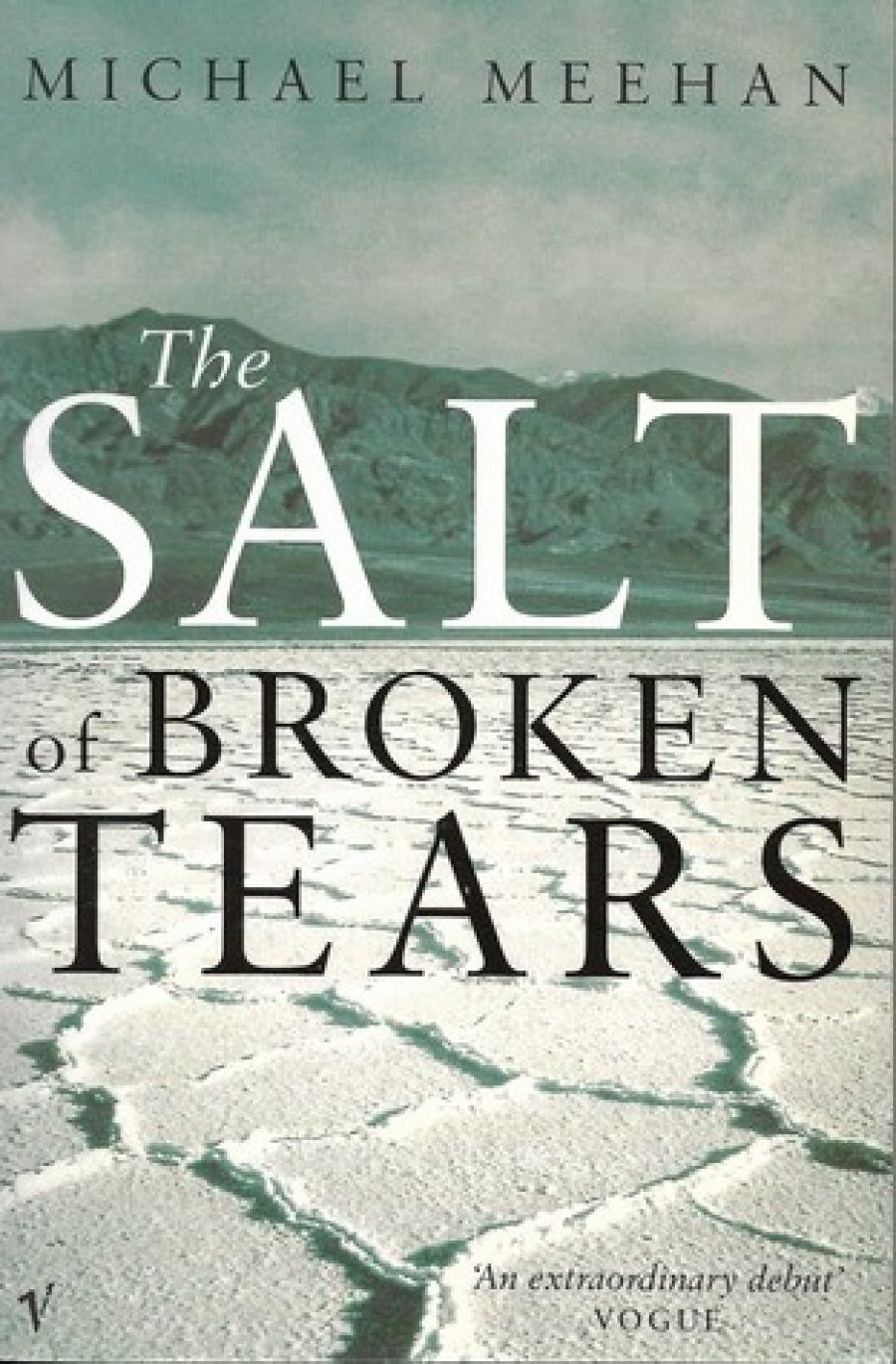
- Free Article: No
- Contents Category: Fiction
- Review Article: Yes
- Online Only: No
- Custom Highlight Text:
In one sense, the publisher’s blurb on this novel says it all.
- Book 1 Title: The Salt of Broken Tears
- Book 1 Biblio: Vintage, $17.95 pb, 297 pp, 0091839130
Yet having said this, the blurb has told us nothing of this intense, powerful novel. At one level, the novel offers us a meticulously detailed and geographically exact account of the boy’s journey. Yet even the detailed observations raise the prose to the level of poetry, conveying the inwardness of the boy’s experience of the outer. The apparently featureless plains of the Victorian deserts are revealed as a country of endless variety and deep significance. The boy’s search for Eileen and Cabel Singh becomes a study of this significance, an attempt to penetrate the emptiness that first confronts the traveller and discover the meaning of the silence that it holds.
Although the narrative is a realistic account of the boy’s journey, it is also an account of his quest into a terra nullius that is both the desert country that, although now being measured for railways, fences and ploughs, is still to be discovered by those settling into it, and the interior world of these people and of the boy himself. In this world, the boy and the girl are both real characters and mythical people who awaken an anti-Eden that refuses them a place where they may grow into their own meaning. The coming of the girl awakens the boy to the possibilities of a life within himself and beyond the farm. The denial of these possibilities leaves his parents and the other settlers as living dead.
The pattern of the boy’s quest is cyclical, not lineal. It takes him into the realms of a silence that he in turn brings back to the place he started from, and which he leaves again. His journey takes him past the silence into which Aunt Aggie has been driven by the loss of love, and beyond the silence into which his father retreats after the detestation of the battle of the Somme. He finds the silence of the desert, where Cabel Singh goes to find nurture for the meanings he shares with his friends through the stories he gives them. This is the silence the boy finally declares as his, a silence found only by those prepared to escape the bondage of houses and settled society. Those bound by fixed codes find it an affront that they can deal with only through the kind of violence and bloodshed that provides the novel’s climax.
The boy is both helped and driven on his quest by the various lost people he encounters in his search. These people are contrasted with the living dead, who impede his search because they cannot contemplate their own. The dead loss assessor, the surveyor fleeing the storm with his family, the body of the man in the red striped pyjamas, the bag-sewer with his tales of a dead France, Cabel Singh’s compatriot, Old Sally, and the banker’s wife, trapped in a bush town with her dance and her gramophone, reveal unfathomable depths beneath the mapped surface of life that was all he had known. They destroy the security of known ways of behaviour and open up the dangerous possibilities of an unknowable future. This future does, however, offer some hope of learning to live in the land like its first people, who enter the narrative only briefly to suggest alternative possibilities. The boy pays his dues by taking from them the body that has come from his world to interrupt theirs. Like their lives, however, the body remains a mystery to him.
The novel itself maintains a silence about some of the mysteries it offers to solve. Eileen’s origins remain obscure, and even her ultimate fate is revealed only elliptically. This is not due to any confusion in the writing, but rather to the author’s diversion of the reader’s attention away from the merely empirical, the physical fate of the characters, to the material nature of the environment and the metaphysical, or spiritual, meaning they derive from it. The true subject of the novel is how its characters learn to live with themselves or, by failing to make the attempt, die to themselves and each other.


Comments powered by CComment